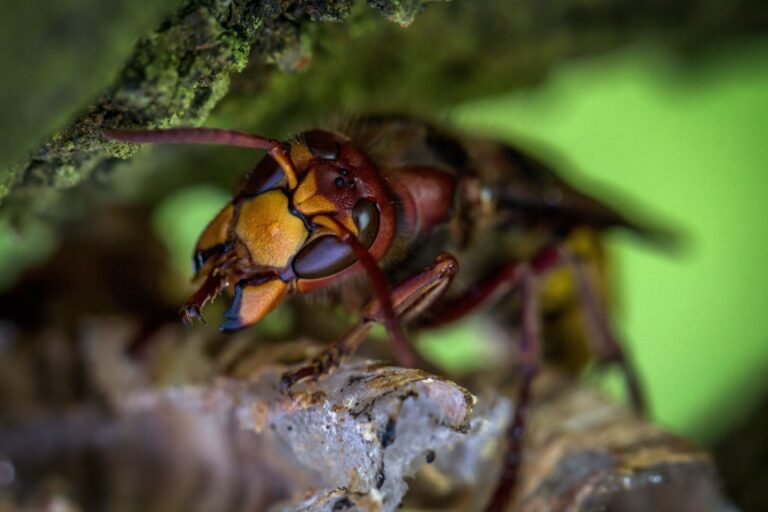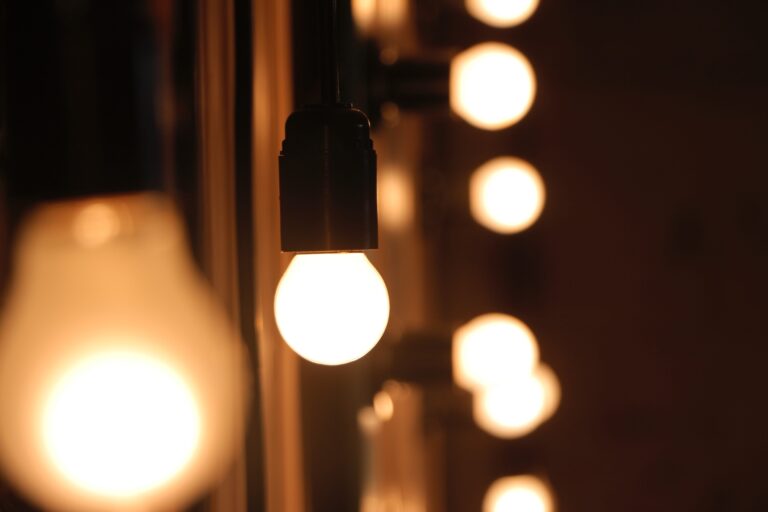We hear the same questions every year as our customers encounter unusual behaviour from our native pests. This month, I thought it would be useful to focus on the questions we hear every summer about hornets.
We covered the subject of Asian hornets in an earlier post – these are being seen occasionally in the UK, and should always be reported. The native species of hornets, the European hornet (Vespa crabro) is the one that is seen far more often – more numerous, much larger than wasps and beautiful with it.
You can’t miss a European hornet. The workers are about 25mm long, and the queen of the colony can be up to 38mm long. They have six brown legs, a yellow face, chestnut brown thorax and a long yellow abdomen banded with thin black stripes. They emit a loud hum and are generally peaceful. Though they are always ready to defend their nest or food source, so they will sting if you swat at them or get too close to their nest.
If they do sting you, their sting is smooth and can be easily retracted and used to sting you again. It will hurt and you will probably get a painful red lump at the sting site. If the sting itself breaks off and stays lodged in your flesh, take it out with tweezers as soon as possible to minimise the amount of venom it leaks into you. It’s unlikely that the sting will cause more harm than mild irritation which can be calmed by anti-histamine cream. Anaphylactic shock reactions are possible (but very rare) and you should always seek medical help if you suspect you are suffering a severe reaction to any insect bite or sting.

The main questions we hear from our customers are;
“Do hornets fly at night?”
“Why do hornets keep banging against my windows at night?”
“Why do I see more hornets at night?”
Most insects are active during the day and return to the nest at night, so you would rarely find a wasp or bee flying after dusk. Not so hornets. They are active all evening and into the night and they are attracted to light. The security lights outside your house or the sight of lights in your rooms will draw them in, and you will hear these huge insects flying full speed into the window in an attempt to reach it (be grateful for the glass in your windows…)
Many pest controllers make evening visits so that they can observe hornets when they are most active. Very often, we’ll come out to check that there isn’t a nest problem and find that the house is located near woodland, and that the hornets have made a nest in the woods and have come over to see what that light is.
Unless hornets have built a nest where it is likely to be frequently disturbed, they rarely cause problems for humans. Hornets are mainly carnivorous and prey on other insects such as flies, grasshoppers, dragonflies and bees. They take tiny strips of bark from trees to build their nest with and, like wasps, they are attracted to fallen fruit.
If you want to reduce your contacts with hornets, two top tips. First, remove any fallen fruit in your garden promptly (and watch out for any wasps or hornets burrowing into the fruit before you pick up that apple or pear). Second, change any lights seen from the outside of your house. Draw your curtains before switching on the interior lights. Change your security lighting; put in a smart bulb so that you can control when it activates, and swap the bright white lighting to warm yellow or (best of all) red, as hornets are unable to see red light.

Like wasps, hornets are active in summer. By the time autumn rolls around the colony is preparing to close down for the winter – the queens will hibernate and awake to build a new nest and a new colony in spring, while the worker hornets will die off. If you still have hornets crashing into your window at night now – close the curtains. It’s the sound of summer and it will soon be over.

